Period: May 30 – June 5, 2020
Main topic: Colossal scale unrest in the United States had virtually no effect on economic performance. This suggests that the «old» model of the existence of a person of the «middle» class has already been practically destroyed, internal financial flows and sources of living of households, small and medium-sized businesses require a radical restructuring. The US stock market is also growing – its performance is no longer dependent on the real economy. Economic growth is possible only by creating a new structure, the restoration of the old is practically impossible.
Macroeconomics
In May, Japan’s manufacturing PMI hit an 11-year bottom:
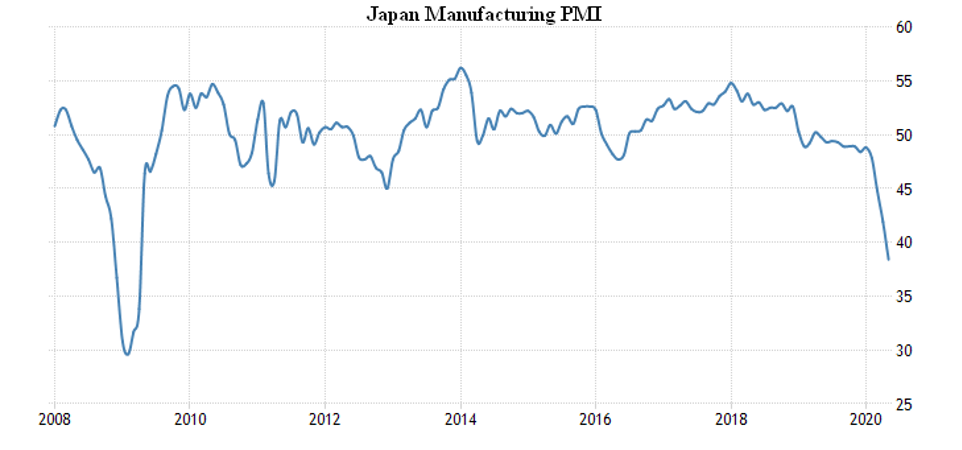
Eurozone rebounds from April record low:
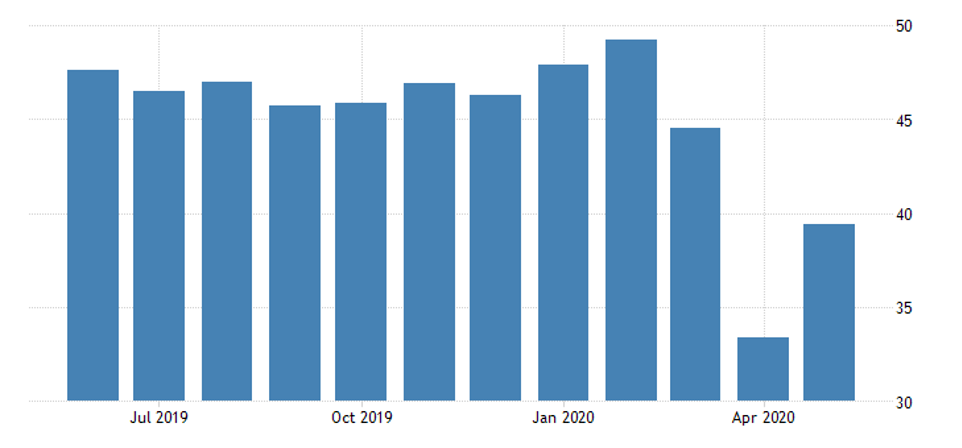
Same in Britain:

And Russia:

In the USA – from an 11-year-old bottom:

About the same in the eurozone construction sector and Britain.
A similar picture in the service sector: Japan, the eurozone, Britain, USA and Russia.
But in China, a 10-year high.
In April, industrial production in Brazil collapsed by 18.8% per month and 27.2% per year, both of which are the worst in 30 years. Industrial production in Spain in April fell by 33.6% per year – an anti-record in 44 years of observation.
Industrial orders in the US in April fell 13% per month after -11% in March: the worst dynamics in 29 years of observation. The level of orders per capita (adjusted for inflation) is the weakest for all time, even according to official data; in reality, taking into account amendments to the regular distortion of statistics in the USA, it is still much worse (see graph):
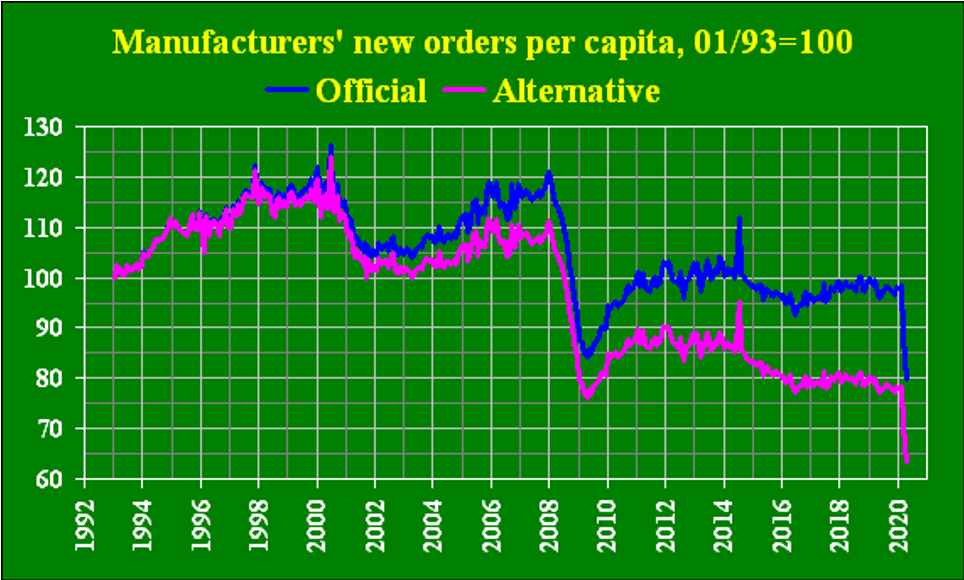
In Germany, industrial orders collapsed by 25.6% per month (for at least 68 years of observation) and 36.6% per year (at the bottom of 2009).
The mood of the English at the bottom since January 2009.
Retail sales in Italy in April fell by 26.3% per year – minimum since 1996. Eurozone retail in April fell by 11.7% per month (after -11.1% in March) and 19.7% per year – both are historically the worst.
Japanese spending in April fell by 11.1% per year – a record low in 19 years of observation:

Leading indicators of Japan are the worst since March 2009, and coinciding – since November 2009.
The number of welfare recipients in the United States suddenly rose again:
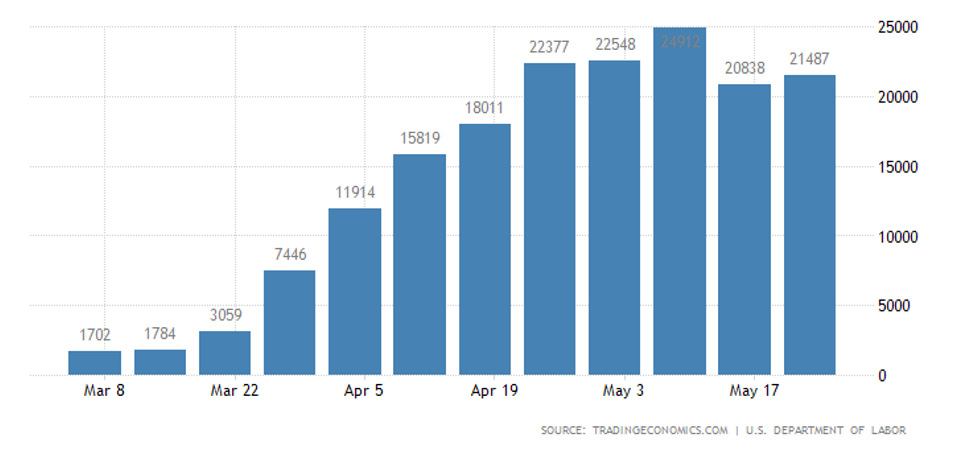
At the same time, however, the report of the Ministry of Labor for May suddenly showed an increase in employment, ahead of forecasts by as much as 10 million jobs. And the unemployment rate has just as strangely declined:
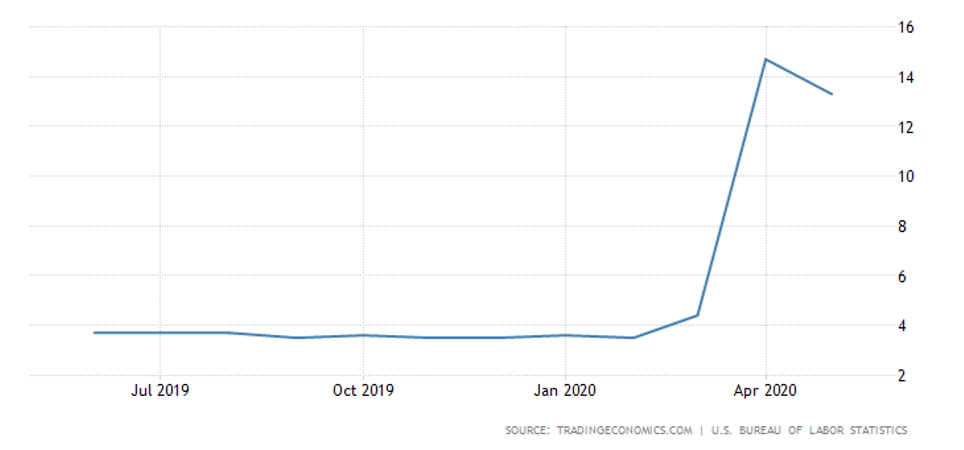
UK consumer credit drops record pace, as well as approved mortgage applications.
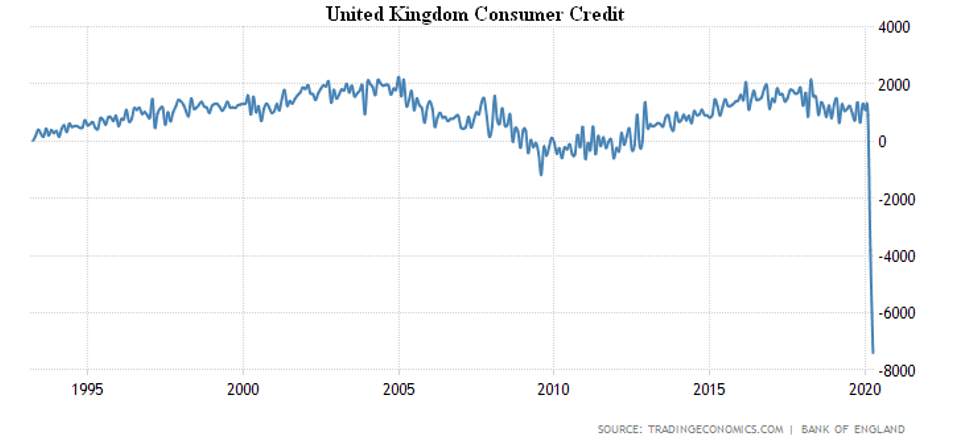
The ECB has expanded and extended the asset buyback program (read – issue).
The Central Bank of Australia did not change anything, but is ready to expand the purchase of bonds, the same with the Central Bank of Canada.
Conclusions: The fact that the crisis continues is no longer news. But here the statistics of American unemployment is very surprising. In reality, it shows two circumstances. The first is that highly specialized statistical techniques in times of crisis give not quite adequate data. The second is that Trump’s demands not to fire workers lead to the fact that they are not registered as unemployed. However, in real, they do not go to work and receive state subsidies.
Practically, in the USA today 40% of the population do not go to work, 30% are not sure of their future and are likely to lose their jobs within a few months, the current unemployment rate is likely closer to 20%. But formal indicators have clearly improved.
As a result, the stock market jumped sharply (robots playing on it do not understand the subtleties of statistics), despite the fact that the real unemployment rate, nevertheless, is closer to 20% than to the official 13%. But for most businessmen who are not burdened with special knowledge, such misinformation can give a completely wrong signal. For this reason, adequate analytics today is becoming more important than formal indicators that are not adapted to crisis phenomena.

